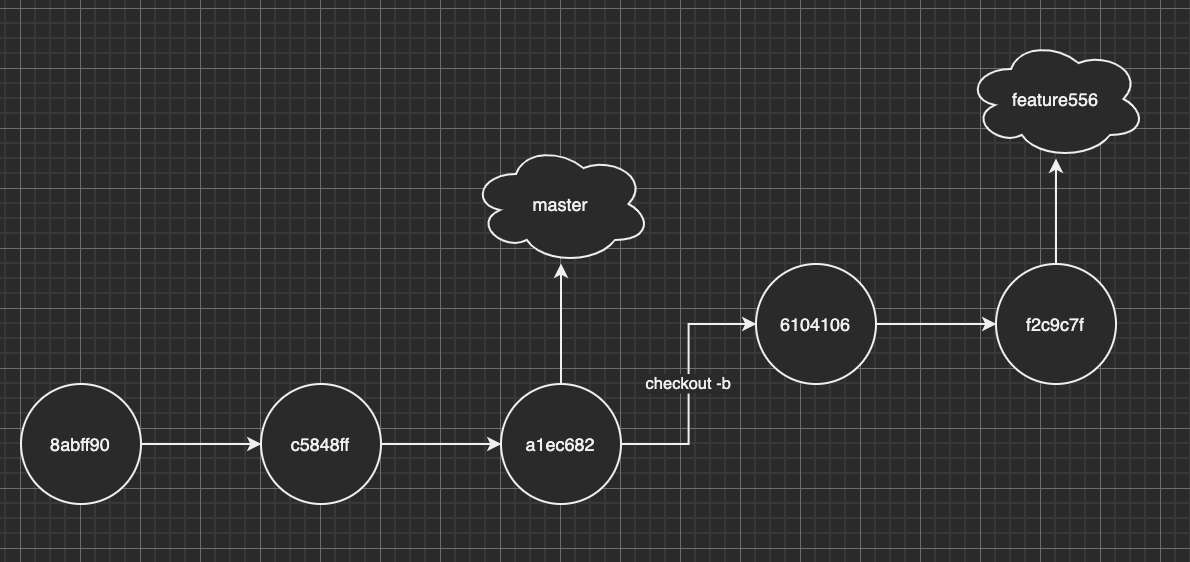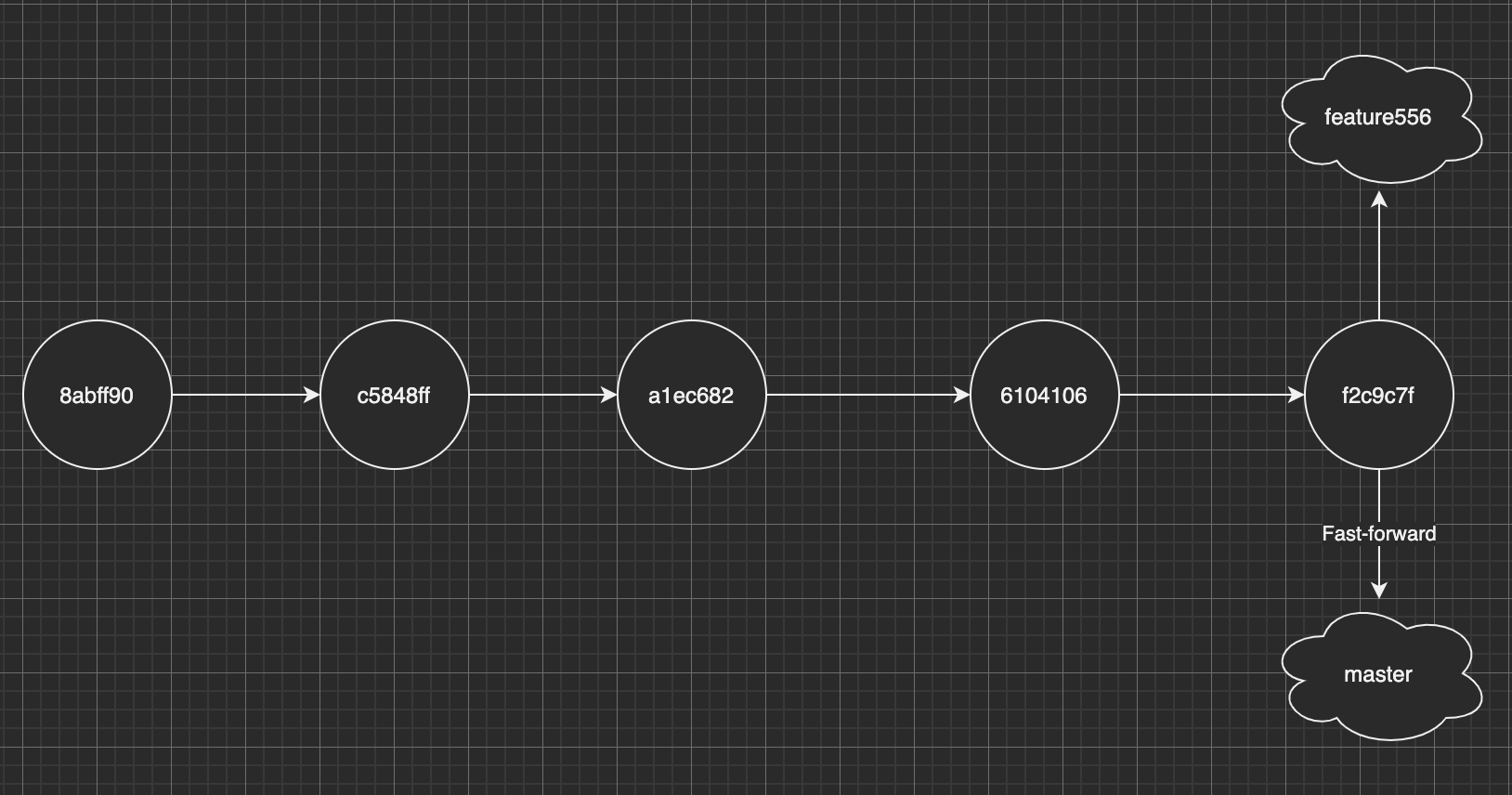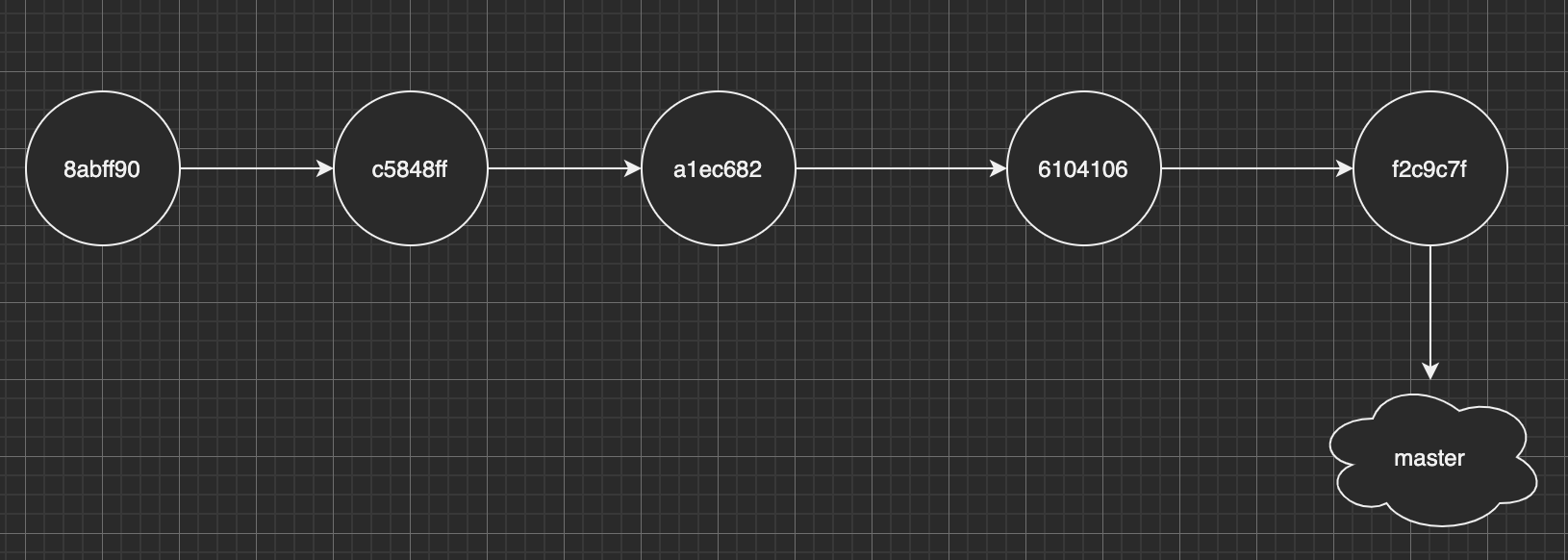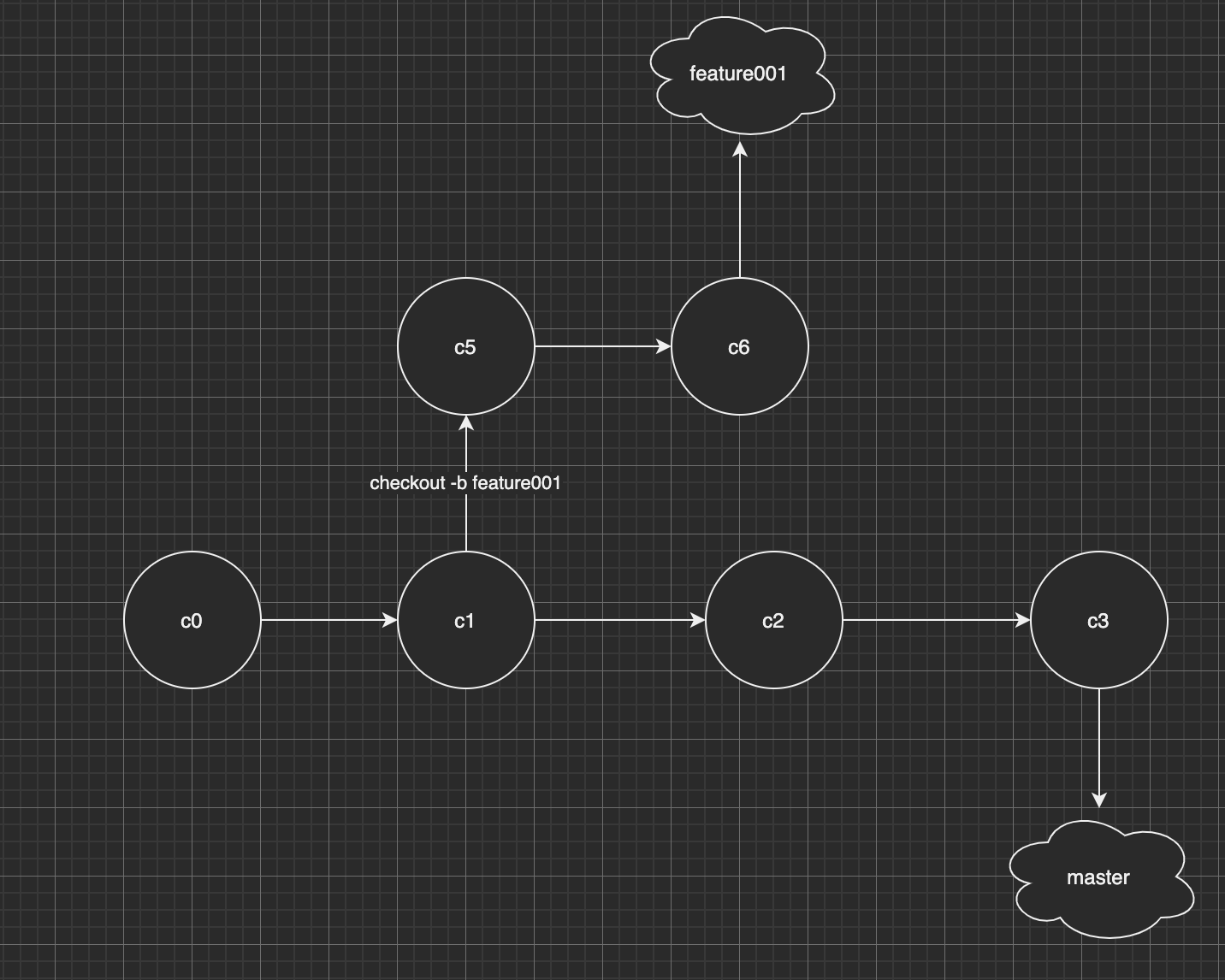前言
git merge 应该是开发者最常用的 git 指令之一,默认情况下你直接使用 git merge 命令,没有附加任何选项命令的话,那么应该是交给 git 来判断使用哪种 merge 模式,实际上 git 默认执行的指令是 git merge -ff 指令(默认值)
对于专业的开发者来说,你可能无须每次合并都指定合并模式(如果需要的话还是要指定的),但是你可能需要知道 git 在背后为你默认做了什么事情,这样才能保证你的代码万无一失。
先说说什么是 Fast-forward
我们从一个正常开发流程来看看:
开发者小王接到需求任务,从 master 分支中创建功能分支,git 指令如下:
git checkout -b feature556 Switched to a new branch 'feature556'
小王在 feature556 分支上完成的功能开发工作,然后产生1次 commit,
git commit -m 'Create pop up effects' [feature556 6104106] create pop up effects 3 files changed, 75 insertions(+)
我们再更新一下 README 自述文件,让版本差异更明显一些
git commit -m `updated md`
这时候我们看看当前分支的 git 历史记录,输入 git log --online -all 可以看到全部分支的历史线:
f2c9c7f (HEAD -> feature556) updated md 6104106 create pop up effects a1ec682 (origin/main, origin/HEAD, main) import dio c5848ff update this readme 8abff90 update this readme
直接看下图可能会更好理解一些

功能完成后自然要上线,我们把代码合并,完成上线动作,代码如下
git checkout master git merge feautre556 Updating a1ec682..38348cc Fast-forward ....... | 2+++ 1 file changed, 2 insertions(+)
如果你注意上面的文字的话,你会发现 git 帮你自动执行了 Fast-forward 操作,那么什么是 Fast-forward ?
Fast-forward 是指 Master 合并 Feature 时候发现 Master 当前节点一直和 Feature 的根节点相同,没有发生改变,那么 Master 快速移动头指针到 Feature 的位置,所以 Fast-forward 并不会发生真正的合并,只是通过移动指针造成合并的假象,这也体现 git 设计的巧妙之处。合并后的分支指针如下:

通常功能分支(feature556) 合并 master 后会被删除,通过下图可以看到,通过 Fast-forward 模式产生的合并可以产生干净并且线性的历史记录:

再说说什么是 non-Fast-forward
刚说了会产生 Fast-forward 的情况,现在再说说什么情况会产生 non-Fast-forward,通常,当合并的分支跟 master 不存在共同祖先节点的时候,这时候在 merge 的时候 git 默认无法使用 Fast-forward 模式,
我们先看看下图的模型:

可以看到 master 分支已经比 feature001 快了2个版本,master 已经没办法通过移动头指针来完成 Fast-forward,所以在 master 合并 feature001 的时候就不得不做出真正的合并,真正的合并会让 git 多做很多工作,具体合并的动作如下:
- 找出 master 和 feature001 的公共祖先,节点 c1,c6, c3 三个节点的版本 (如果有冲突需要处理)
- 创建新的节点 c7,并且将三个版本的差异合并到 c7,并且创建 commit
- 将 master 和 HEAD 指针移动到 c7
补充:大家在 git log 看到很多类似:Merge branch 'feature001' into master 的 commit 就是 non-Fast-forward 产生的。
执行完以上动作,最终分支流程图如下:

如何手动设置合并模式 ?
先简单介绍一下 git merge 的三个合并参数模式:
- -ff 自动合并模式:当合并的分支为当前分支的后代的,那么会自动执行
--ff (Fast-forward)模式,如果不匹配则执行--no-ff(non-Fast-forward)合并模式 - --no-ff 非 Fast-forward 模式:在任何情况下都会创建新的 commit 进行多方合并(及时被合并的分支为自己的直接后代)
- --ff-onlu Fast-forward 模式:只会按照
Fast-forward模式进行合并,如果不符合条件(并非当前分支的直接后代),则会拒绝合并请求并且推出
以下是关于 --ff, --no-ff, --ff-only 三种模式的官方说明(使用 git merge --helo 即可查看):
Specifies how a merge is handled when the merged-in history is already a descendant of the current history. --ff is the default unless merging an annotated (and possibly signed) tag that is not stored in its natural place in the refs/tags/ hierarchy, in which case --no-ff is assumed.
With --ff, when possible resolve the merge as a fast-forward (only update the branch pointer to match the merged branch; do not create a merge commit). When not possible (when the merged-in history is not a descendant of the current history), create a merge commit.
With --no-ff, create a merge commit in all cases, even when the merge could instead be resolved as a fast-forward.
With --ff-only, resolve the merge as a fast-forward when possible. When not possible, refuse to merge and exit with a non-zero status.
总结:
三种 merge 模式没有好坏和优劣之分,只有根据你团队的需求和实际情况选择合适的合并模式才是最优解,那么应该怎么选择呢? 我给出以下推荐:
- 如果你是小型团队,并且追求干净线性 git 历史记录,那么我推荐使用
git merge --ff-only方式保持主线模式开发是一种不错的选择 - 如果你团队不大不小,并且也不追求线性的 git 历史记录,要体现相对真实的 merge 记录,那么默认的
git --ff比较合适 - 如果你是大型团队,并且要严格监控每个功能分支的合并情况,那么使用
--no-ff禁用Fast-forward是一个不错的选择
到此这篇关于git merge --ff/--no-ff/--ff-only 三种选项参数的区别解析的文章就介绍到这了,更多相关git merge --ff/--no-ff/--ff-only内容请搜索自学编程网以前的文章或继续浏览下面的相关文章希望大家以后多多支持自学编程网!

- 本文固定链接: https://zxbcw.cn/post/211057/
- 转载请注明:必须在正文中标注并保留原文链接
- QQ群: PHP高手阵营官方总群(344148542)
- QQ群: Yii2.0开发(304864863)
